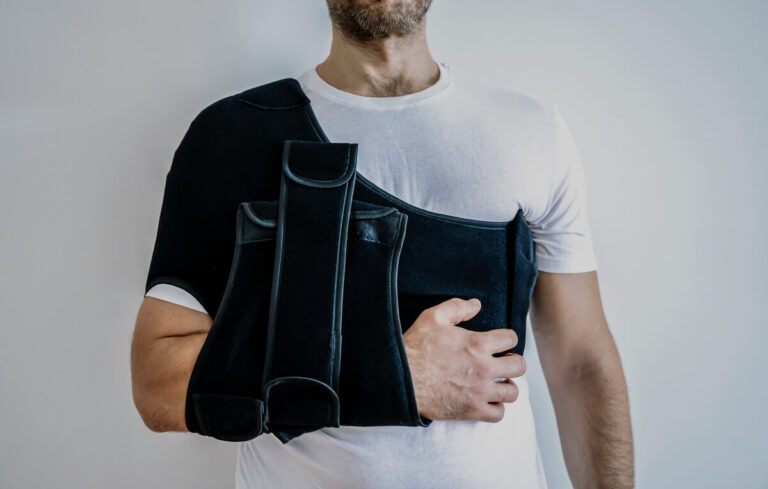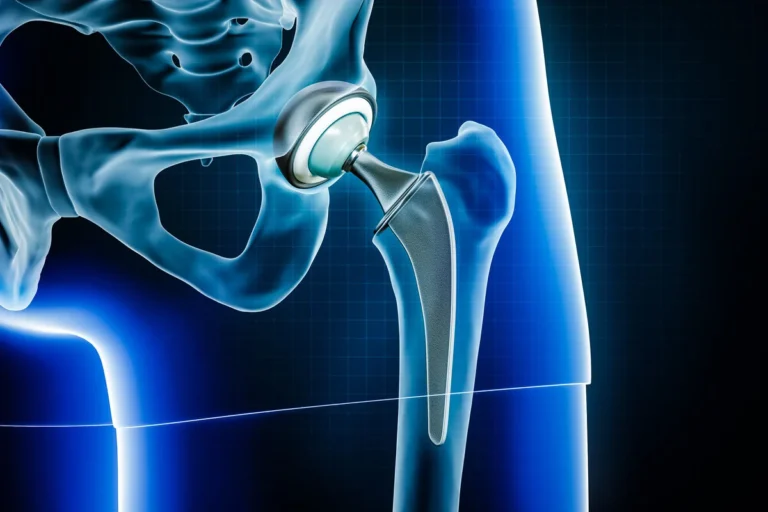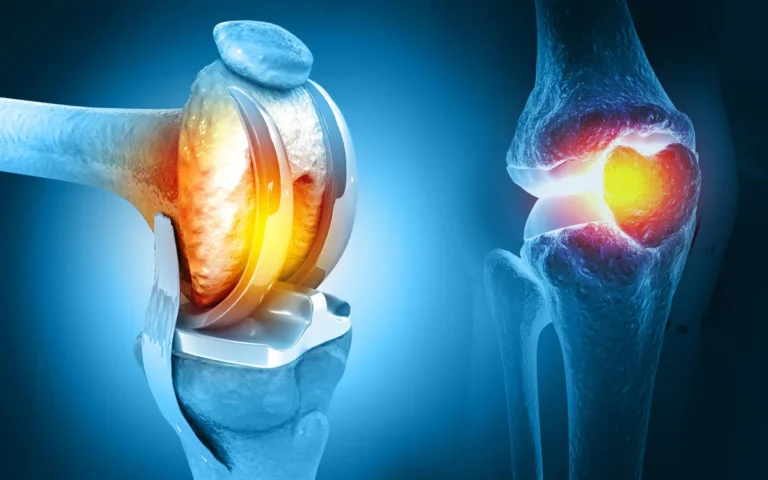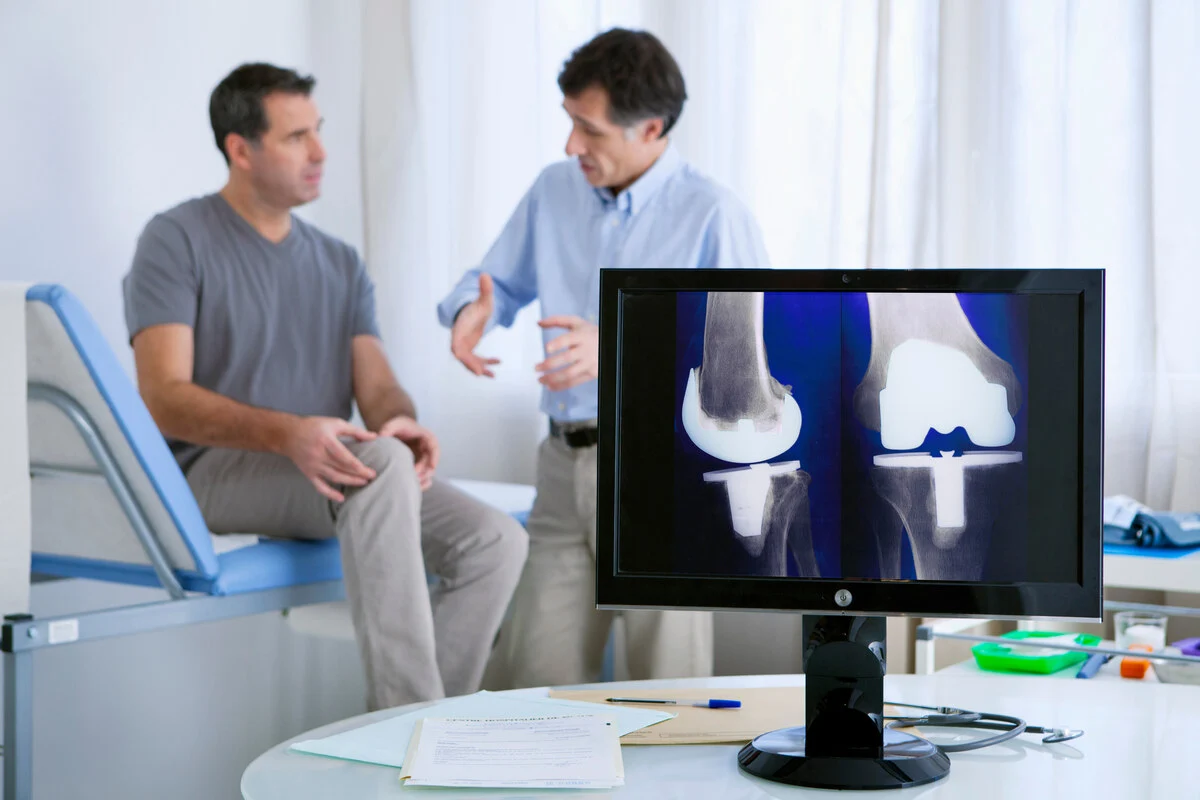
Knee Replacement Recovery and Rehabilitation: What Is The Hardest Part?
The hardest part of knee replacement recovery often involves managing pain while coping with both physical and emotional challenges during the healing process. Many patients find that the first few weeks after surgery can be especially tough, as limited mobility, swelling, and discomfort may create frustration and anxiety. Patients may experience pain of varying intensity during this period and should monitor for severe pain or other symptoms, such as increased swelling or nerve and muscle issues, that could indicate complications. Fortunately, with the right guidance and support from Bull City PT’s compassionate team, you can overcome these obstacles of any Total Joint Replacement and achieve your recovery goals.
Managing Postoperative Pain And Discomfort
Pain and stiffness are common after knee replacement surgery, especially in the first days and weeks, and post operative pain is a typical part of the recovery process. It’s important to understand that postoperative pain is temporary, and proactive pain management (such as pain medication and pain management techniques—including prescribed medications, ice, elevation, and gentle movement) can make a big difference in your overall comfort. Don’t hesitate to communicate openly with your medical team about your pain levels, so your plan can be adjusted as needed. Discuss different pain management techniques with your care team to find the best approach for your needs.
Physical And Emotional Challenges
Recovery isn’t just physical—it’s emotional, too. Many people feel discouraged by slow progress or unexpected setbacks. Feeling isolated or dependent on others for help can add to the emotional weight. At Bull City PT, we encourage you to share your feelings, set realistic expectations, and celebrate small victories along the way. Mental endurance is just as important as physical strength during your rehabilitation journey.
Top 5 Mistakes After Knee Replacement To Avoid
Understanding common pitfalls can help you have a smoother recovery. The top 5 mistakes after knee replacement include skipping prescribed exercises, neglecting pain management, resuming activities too quickly, not following wound care guidance, not following your doctor’s instructions for rehabilitation and medication, and missing follow-up appointments. Each of these can delay healing or lead to further complications. Your Bull City PT therapists provide customized exercise programs and education, ensuring you avoid these mistakes and get back to your favorite activities safely.
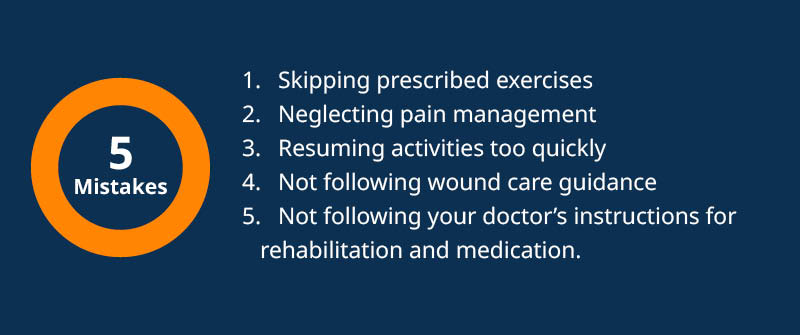
Coping With Limited Mobility Initially
Initial restrictions in movement may be one of the most challenging aspects for active adults. Using mobility aids, such as walking aids like walkers or canes, relying on family, or accepting temporary limitations can be frustrating, but it’s a normal and necessary part of recovery. With time and persistence, your strength, flexibility, and confidence will grow.
Long-Term Restrictions And Lifestyle Adjustments
While most people return to an active lifestyle, there may be permanent restrictions after knee replacement—such as avoiding high-impact sports and contact sports such as football or soccer, kneeling, or certain twisting movements—to protect your new joint. It’s important to focus on what you can do, not what you can’t. Bull City PT guides you in making sustainable adjustments, so you can continue enjoying a fulfilling and independent life.
How Soon Do You Start Rehab After Knee Replacement?
Rehabilitation after knee replacement surgery typically begins almost immediately post-surgery, sometimes within a few hours or on the same day as your procedure, often within 24 hours. Early movement and therapy are crucial for preventing complications, restoring mobility, and ensuring the best possible outcome. Starting rehab sooner rather than later helps set the foundation for a successful recovery by reducing stiffness, managing swelling, and beginning the process of regaining strength and flexibility.
Timeline For Beginning Physical Therapy
Most patients are encouraged to start some gentle movements and exercises within the first day after surgery, often beginning in the recovery room once your vital signs are stable, sometimes even while still in the hospital. Guided by your medical team, these initial efforts typically focus on simple range-of-motion activities and learning to use any necessary assistive devices such as a walker. For some, inpatient rehab after knee replacement may last several days, depending on individual health needs or the presence of any complications. Others may be discharged earlier and continue their recovery at home or through outpatient physical therapy sessions.
Types Of Rehab: Inpatient Vs Outpatient
Your rehabilitation setting will depend on your overall health, home environment, and recovery progress. Inpatient rehab after knee replacement at a rehab facility often offers intensive daily therapy and monitoring for those who need extra support or have limited help at home. Outpatient rehab (also known as outpatient therapy), which involves scheduled visits to a physical therapy clinic like Bull City PT, is suitable for many patients and focuses on gradually increasing exercise intensity, mobility, and strength as you heal. Both options are effective, and your physical therapist will help you determine the best path.
Role Of Early Movement In Recovery
Participating in early movement is essential for a smooth knee replacement recovery, as it helps prevent blood clots and improves blood flow to the operated area. Gentle activities help reduce the risk of developing blood clots, minimize swelling, and maintain joint flexibility. Remember, early movement doesn’t mean overexertion—it’s about finding a safe and progressive way to restore function. Physical therapists provide expert guidance to ensure every movement is safe and tailored to your specific situation.
Exercises And Activities In Initial Rehab
Initial rehab exercises may include ankle pumps, quad sets, heel slides, quadriceps sets, straight leg raises, assisted knee bends, and unsupported knee bends, as well as sitting/standing practice, all aimed at preventing loss of strength and regaining the knee’s motion. Your physical therapy team introduces these in phases, advancing only when it’s safe for your healing knee. These exercises focus on improving knee flexion, knee movement, and the knee’s range to restore mobility and flexibility after surgery. As you progress, more weight-bearing and strength-building activities will be incorporated to prepare you for daily life and your return to work.
Importance Of Adherence To The Rehabilitation Plan
Consistently following your rehabilitation plan (including your rehab program and exercise regimen)—whether in at-home, outpatient, or inpatient settings—is critical to achieving long-term success. Skipping exercises or not prioritizing physical therapy can extend your knee replacement surgery recovery time off work and lead to less optimal outcomes. At Bull City PT, we are dedicated to providing ongoing encouragement and support, helping you stay motivated and accountable throughout your recovery journey.
How Long Does It Take To Walk Normally After Total Knee Replacement?
Most patients can expect to resume walking with assistance–such as a walker or cane–within a day or two after total knee replacement surgery, but regaining a normal walking pattern often takes a bit longer. Generally, walking without aids and with a natural stride usually occurs between 6 and 12 weeks post-surgery, though the recovery journey can vary based on individual factors like age, pre-existing conditions, and commitment to rehabilitation. Elderly patients or those with additional mobility challenges may take a little longer, while those who diligently follow their physical therapy protocols often see faster results. At Bull City PT, our expert therapists guide and support you at every step, helping you achieve your mobility milestones as efficiently as possible.
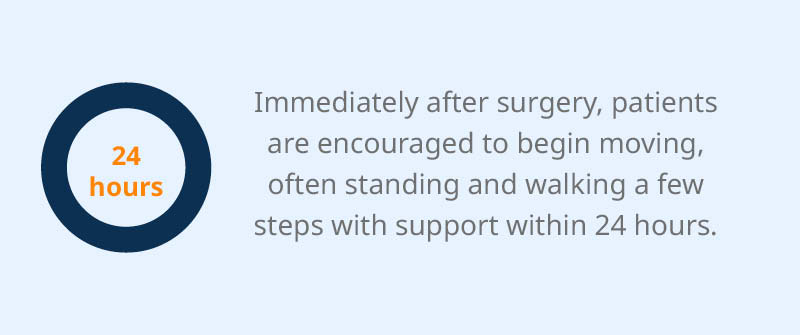
What Is The Typical Walking Timeline After Knee Replacement?
Immediately after surgery, patients are encouraged to begin moving, often standing and walking a few steps with support within 24 hours. By the end of the first week, most are taking short walks with a walker. As swelling and pain decrease, transitioning to a cane and eventually walking without assistance becomes possible, commonly by the third to sixth week. Most adults walk confidently and return to many typical activities around the 8- to 12-week mark, and resume everyday activities such as dressing, bathing, and light chores, but individual timelines can vary.
How Can You Address Swelling And Stiffness?
Total knee replacement recovery time swelling is highly variable, with some experiencing swelling for several months post-surgery. Using strategies like ice, elevation, and compression as recommended by your care team, and regular movement greatly helps manage swelling and prevent stiffness. Effective rehabilitation exercises tailored by your physical therapist at Bull City PT can ensure you regain full range of motion and reduce swelling over time. Patience is key—rushing rehabilitation can lead to setbacks, but consistent, well-guided effort delivers lasting results.
What Are The Differences For Elderly Patients?
Knee replacement recovery time for the elderly may be slightly extended due to factors such as pre-existing medical conditions, lower muscle strength, or reduced flexibility at the start. However, age should not be a deterrent to successful recovery. With attentive physical therapy support, elderly patients often exceed their own expectations, returning to favorite activities and improved quality of life. Open communication with your therapy team ensures adaptations are made for safety and comfort throughout the process.
How Do You Regain Full Mobility And Natural Walking?
Regaining full mobility involves more than just time—it requires consistent participation in both supervised and home exercises. Strengthening muscles with knee strengthening exercises and resistance exercises to help knee pain, mobility and support, improving balance, and practicing proper walking form are crucial for reclaiming a natural stride. Techniques may include gait training, range-of-motion stretching, and progressive strengthening exercises. Even after walking unaided, ongoing physical therapy at Bull City PT can help refine your movement and reduce compensation patterns that may have developed before surgery.
Can Pre-Existing Conditions Affect Walking Recovery?
Absolutely. Conditions such as diabetes, obesity, or chronic joint problems can influence the recovery time after knee replacement. Your physical therapist works with you to address these factors, tailoring exercises for your needs and ensuring your recovery plan is both safe and effective. Openly discussing your medical background and any previous knee surgeries helps us create the best rehabilitation path for you.
What Is The Average Recuperation Time For A Total Knee Replacement?
The average recuperation time for a total knee replacement varies from person to person, but most individuals can expect recovery to occur in several phases that span several weeks to months. Typically, patients begin to regain independence in daily activities within 6-12 weeks, with ongoing improvements in strength, mobility, and comfort as you work to recover fully through a structured recovery process for several months after surgery. It’s important to remember that factors such as pre-existing health conditions, the type of knee surgery performed, age, and adherence to rehabilitation plans can significantly influence recovery duration. At Bull City PT, we guide you through each stage, ensuring you achieve your recovery milestones safely and effectively.
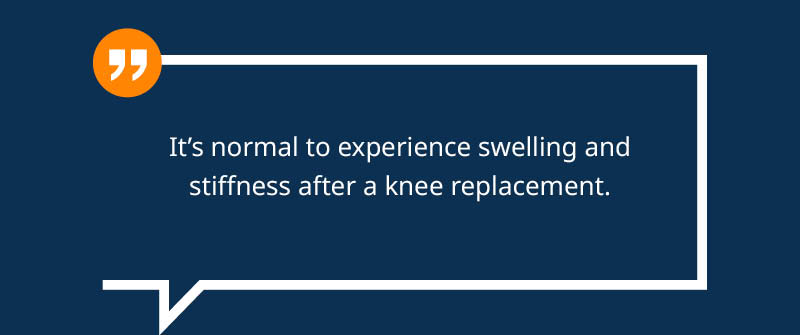
Standard Recovery Phases: Immediate, Short-Term, And Long-Term
Recovery from a total knee replacement is a journey with distinct phases. Immediately after surgery, the focus is on managing pain, minimizing swelling, and beginning gentle movement, typically within 24 hours under professional supervision. The short-term phase, spanning the first 6 weeks, emphasizes restoring range of motion and strength through guided physical therapy. By the long-term phase (3-6 months post-surgery), most patients are working toward advanced activities, such as returning to recreational pursuits or sports, as appropriate. Our team at Bull City PT personalizes your therapy plan according to your goals and progress, supporting you at each step.
Timeframe For Returning To Daily Activities
Most patients are able to resume basic daily activities—such as walking around the house or performing light household tasks—within 2 to 6 weeks after surgery, using your operated knee as knee function improves. Driving is often possible once you are off strong pain medications and can safely control your vehicle, usually around 4-6 weeks post-operation. However, returning to more demanding activities, like vigorous exercise or prolonged standing, may require 3 months or more. It’s crucial to pace yourself and follow professional guidance to ensure a safe and durable recovery.
Expected Time Off Work
How soon you can return to work after a knee replacement largely depends on your job demands. For sedentary (desk) jobs, many people are back at work within 4 to 6 weeks. Those in physically demanding roles may require 8 to 12 weeks, or longer, to recover strength and endurance. At Bull City PT, we can help you set realistic goals and design your rehabilitation to match your work and lifestyle needs.
Average Timelines For Swelling And Stiffness Reduction
It’s normal to experience swelling and stiffness after a knee replacement. Most swelling substantially decreases within 3 months, although slight swelling may persist up to 6-12 months. Regular application of ice, elevation, and structured exercise are critical strategies to manage swelling and stiffness postoperatively. The physical therapists at Bull City PT are experts in guiding you through these techniques and monitoring your progress to ensure optimal healing.
Factors Influencing Recovery Duration
Several factors influence how quickly and smoothly you recover after a total knee replacement. Age, overall health, weight, motivation, and participation in physical therapy all play significant roles. Individuals who consistently perform their home exercises and attend their physical therapy sessions usually achieve faster and more complete recoveries. Additionally, staying positive and setting milestone-based goals with your therapy team—like those at Bull City PT—can make a tremendous difference in your overall experience and outcomes.
At Bull City PT, we understand that every recovery is unique. Our supportive, personalized approach empowers you to regain your independence and return to the activities you love. If you’re preparing for or recovering from knee replacement surgery, schedule your comprehensive evaluation with our caring team today!
Disadvantages And Permanent Restrictions After Knee Replacement
While knee replacement surgery can dramatically reduce pain and restore mobility, it is important for active adults to understand the potential disadvantages of knee replacement surgery, including potential complications associated with the surgical procedure and joint replacement in general, and whether there might be permanent restrictions after knee replacement. This knowledge helps set realistic expectations and empowers you to plan your recovery and maintain a healthy, active lifestyle with your new knee.
What Are The Risks And Disadvantages Of Knee Replacement Surgery?
Like any major surgery, knee replacement comes with certain risks, as explained by orthopedic surgeons who perform knee arthroplasty procedures. Some patients may experience complications such as infection, blood clots, persistent pain, or stiffness. In rare cases, there is a risk of implant loosening or failure over time. Another disadvantage to consider is that an artificial knee—while resilient—may never quite match the feel or function of your original joint, and certain activities might not feel the same. It’s also possible to have an allergic reaction to the implant materials or experience nerve damage, though such side effects are uncommon.
Are There Permanent Restrictions After Knee Replacement?
Most individuals regain excellent function after surgery, but some permanent restrictions after knee replacement are typical. High-impact activities such as running, jumping, or aggressive sports are usually discouraged to prolong the life of your artificial knee. However, low-impact activities—like walking, swimming, golfing, and cycling—are not only permitted but encouraged! Listening to your physical therapist’s advice will help you identify safe ways to stay active for many years.
What Activities Should Be Avoided After Knee Replacement?
To protect your new knee joint, you’ll want to avoid activities that involve sudden stops, repetitive jumping, or significant twisting. Sports such as basketball, singles tennis, or jogging might accelerate implant wear, increase your risk of falls, or lead to injury. Many active adults find joy in hiking, dancing, or yoga—these are usually safe as long as you prioritize form and listen to your body’s signals. Your Bull City PT team can provide personalized guidance based on your goals and conditions.
Will I Need Another Surgery In The Future?
Most knee replacements last 15-20 years or more, but it is possible to need a revision surgery if the implant loosens, wears out, or complications arise. Maintaining a healthy weight, keeping your muscles strong, and following your care regimen can help extend the life of your knee. Continued partnership with your physical therapy team, even after initial rehab, gives you the best chance for long-term success and minimal need for future surgeries.
How To Minimize Permanent Restrictions And Live Well With A Knee Replacement
The best way to minimize limitations is to commit fully to your rehabilitation plan and incorporate lifelong strategies for knee pain relief. Stay active, but choose joint-friendly activities. Work with your physical therapist and occupational therapist to develop strength and flexibility, and report any unusual symptoms promptly. With a positive mindset and ongoing support from Bull City PT, you can look forward to years of healthy movement, accomplishment, and an active lifestyle!
Conclusion: Key Takeaways For A Successful Recovery
Knee replacement recovery can feel like a huge undertaking, but knowing what to expect and how to navigate the process makes all the difference. Key recovery milestones—such as regaining full mobility, reducing swelling, and building strength—will come with dedication, support, and realistic expectations. With the right approach, you can return to your active lifestyle safely and confidently.
What Are The Key Milestones In Knee Replacement Recovery?
Your recovery journey will include several important milestones. In the initial weeks, focus on managing pain and swelling, regaining range of motion, and safely increasing your walking and activity levels. As you move into the mid-recovery phase (usually 6-12 weeks after surgery), you should expect greater independence, improved leg strength, and the ability to participate in activities like swimming, biking, or gentle hiking under your physical therapist’s guidance. The final phase—several months after surgery—typically centers on fine-tuning your movements, eliminating any lingering stiffness, and reclaiming your routine without restrictions. Consistency with exercises and follow-up appointments is vital for reaching these goals.
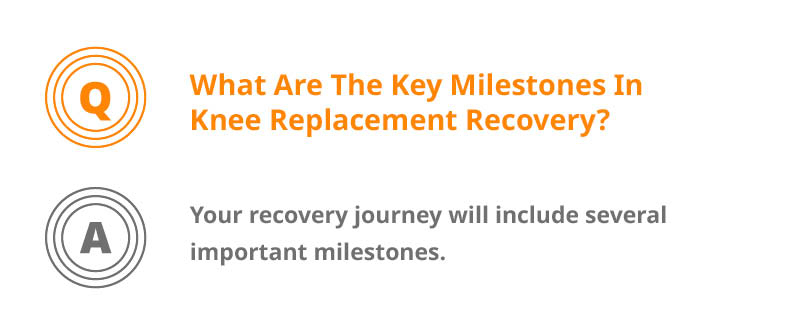
How Can I Avoid Common Mistakes After Knee Replacement Surgery?
Many people struggle most with the frustration of setbacks caused by avoidable errors. Top mistakes after knee replacement include doing too much too soon, neglecting prescribed exercises, skipping follow-up visits, or not asking for help when it’s needed. Make sure to follow your physical therapist’s recommendations and be honest about your pain, difficulties, or uncertainties. Pacing yourself and celebrating small victories will ensure lasting success and minimize re-injury risks.
What Should I Expect For Recovery Time If I Am An Older Adult?
Recovery time may be somewhat longer for elderly individuals, with increased emphasis on pacing and gradual progress. It’s natural for strength, balance, and mobility to return at a slower rate, so patience and ongoing support are critical. Engaging in regular supervised therapy and staying active—as appropriate for your age and condition—are the best ways to achieve a safe and meaningful recovery.
How Do I Manage My Time Off Work And Daily Activities After Surgery?
Planning ahead for your knee replacement recovery time off work is important. Discuss your job requirements with your medical and therapy team, as the type and intensity of your work will influence when it’s safe to return. Many patients can resume a desk job within six to eight weeks, while more active or physically demanding roles may require ten to twelve weeks. During this period, focus on light daily tasks, maintain a positive outlook, and use available resources—like friends, family, or community support groups—for assistance.
Rehabilitation is a journey, and your commitment leads the way. At Bull City PT, we combine experience, compassion, and personalized guidance to ensure that every step of your knee replacement recovery brings you closer to your goals. Let our dedicated team help you regain strength, mobility, and confidence. Don’t let pain or uncertainty hold you back—contact Bull City PT and start your path to a vibrant, active life with us, and rediscover the freedom to do what you love, every day.



